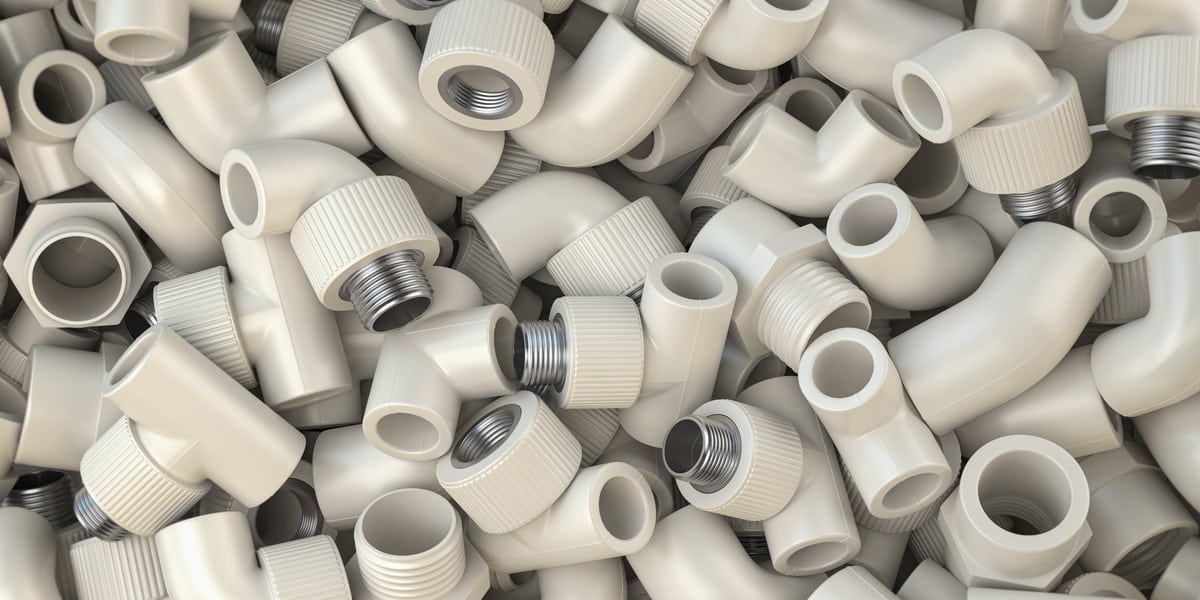Your Guide to the Different Types of Pipe Fittings

Plumbing is the backbone of any building. But it’s not just about the plumbing pipes themselves, it’s also about the connectors that hold everything together—and this is where pipe fittings come in. Understanding these fittings and what they do can ultimately make or break how well your plumbing system works and how long it lasts.
What Are Pipe Fittings?
Pipe fittings are components used to connect different sections of piping or tubing. They can also be used to regulate (or measure) fluid flow, and are essential for altering the direction of flow, dividing flows, and changing the size of the pipe. To put it simply, without pipe fittings, the plumbing system in any building would be incomplete and non-functional.
The Different Types of Pipe Fittings
With how essential pipe fittings are, not many people are aware of how they work or what the different types of pipe fittings are. So, keep on reading to learn more!
Gaskets
Gaskets are mechanical seals that fill the space between two or more mating surfaces, generally to prevent leakage from or into the joined objects while under compression. In plumbing, gaskets are crucial for ensuring a tight seal between pipes and fittings, which prevents leaks that could lead to water damage or loss of pressure.
Pipe Elbows
Elbows are among the most widely used pipe fittings. They allow for the redirection of flow between two pipes or tubes, typically at a 45°, 90°, or sometimes 22.5° angle. The choice of angle depends on the needs of the plumbing system and the space available for the pipes.
Pipe Bend
Similar to elbows, pipe bends offer a smoother turn in the piping system. They come in various dimensions, such as 3D and 5D bends, which refers to the radius of the bend. A 3D bend, for instance, has a radius three times the diameter of the pipe. These bends are essential for minimizing pressure drops in the system.
Pipe Tee
Another type of pipe fitting is a pipe tee. A pipe tee is a T-shaped fitting with three openings that allow for the connection and branching off of pipes. Tees can split or combine fluid flow and are available in various materials and sizes to match the pipes they connect.
Cross
Cross fittings have one inlet and three outlets (or vice versa), which forms a cross shape. They are used to split or join four directions of fluid flow. However, due to their potential to create turbulence, they are less common in plumbing systems.
Pipe Reducers
Reducers are used to connect two pipes of different diameters, adjusting the pipe size to meet the flow requirements of the system. There are two main types of reducers: concentric and eccentric, each serving a specific purpose depending on the direction of flow and gravity.
Pipe Caps and Stub Ends
Caps are used to close off the end of a pipe, either temporarily or permanently. Stub ends are used in conjunction with lap joint flanges to allow for easy disassembly of pipes for inspection or replacement.
Piping Unions
Unions are similar to couplings but are designed for quick and easy disconnection and reconnection. They are used in spaces that require frequent dismantling for maintenance or inspection.
Factors to Consider When Choosing Pipe Fittings
When selecting from the different types of pipe fittings for a plumbing project, several factors must be considered to ensure the system’s integrity and functionality:
- Material Compatibility: The fitting material should be compatible with the pipe material and the fluid being transported.
- Size and Dimensions: Fittings should match the size and dimensions of the pipes they will connect.
- Professional Consultation: Consulting with a professional plumber can provide valuable insights and recommendations based on experience and expertise.
Get Expert Plumbing Guidance and Perfect Pipe Fittings with Dupree Plumbing!
Planning a plumbing project or need advice on pipe fittings? Contact Dupree Plumbing. Our experts can help with all your plumbing needs, ensuring your system meets code and works perfectly.



